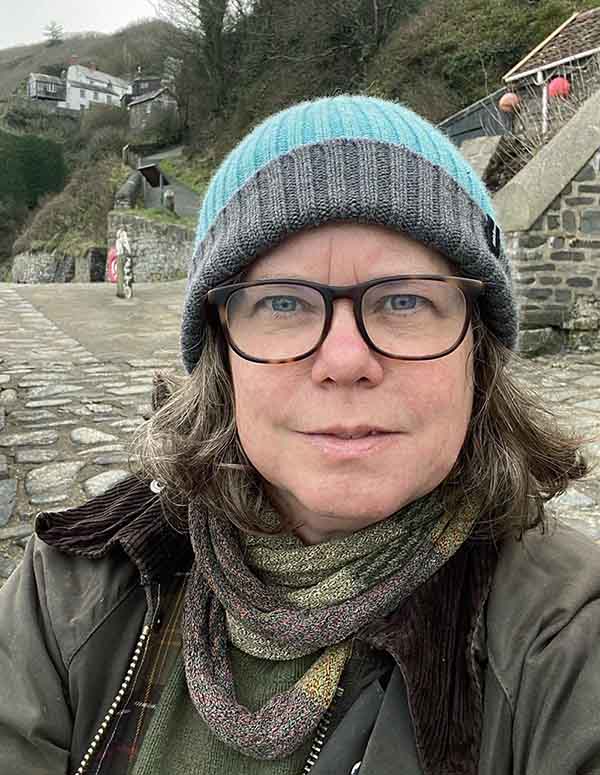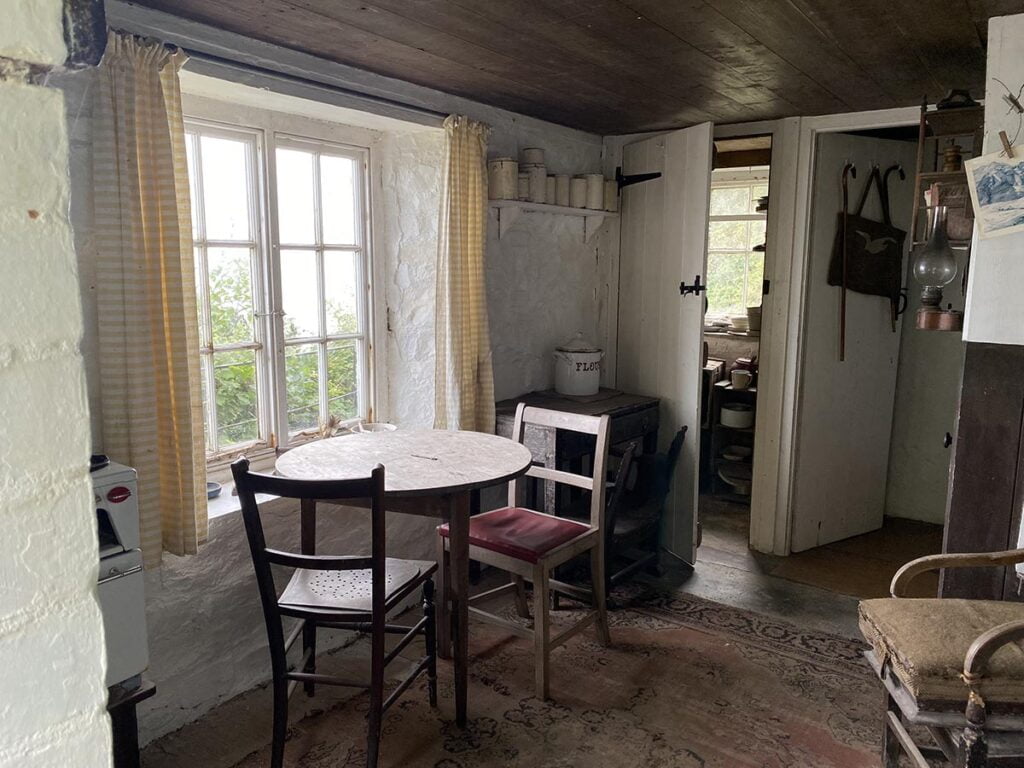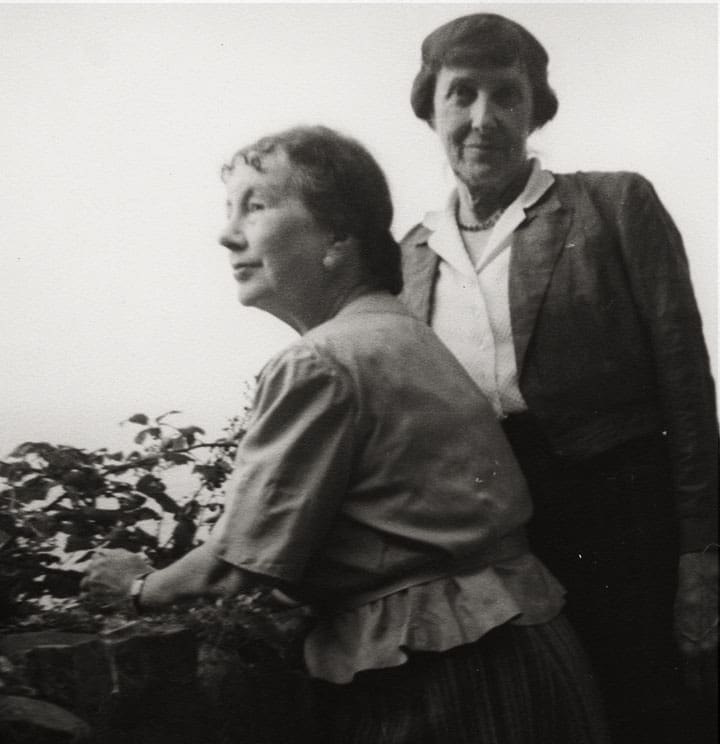
Hello! I’m a PhD student at the University of the West of England (UWE), Bristol. I am researching the Archive, to find out what Mary Stella Edwards’ poetry can teach us about our relationship with the natural world. My current title is Voyaging through immensity: What did Mary Stella Edwards find in Bucks Mills?
It all started with a visit to the ‘Between the Lines’ exhibition at the Burton at Bideford… This introduced me to Mary Stella Edwards’ poetry – I remember that her poem Rooms had a particular impact. I spent a long time looking at the photo of Mary Stella Edwards and Judith Ackland swimming at Bucks Mills, as this is something I regularly do myself.
Luckily for me, the exhibition coincided with open days at the Cabin, and the chance to see inside. It felt transgressive to be there, looking at someone else’s things – noticing the fraying rug and disintegrating lino – in a way that visits to other National Trust properties do not. However, as the open day was part of the Burton’s exhibition, I was able to meet Elizabeth Crowle there. She’s one of the Trustees of the Ackland and Edwards Trust. We chatted about her friendship with Mary Stella Edwards. She assured me that both women wanted to share the Cabin, and told me about Mary Stella’s ability to make friends, even late in life. That evening I phoned fellow artist Elizabeth Willow, and we decided to apply to do a residency at the Cabin.

A residency at the Cabin
Like many artists who have spent a week on residency at the Cabin in Bucks Mills, we were knocked sideways by the intensity of the experience. This is not just due to the Cabin, despite it feeling full of presences, but also because Bucks Mills is such an extraordinary place. Having lived in North Devon for over 25 years, I thought I knew it. But a week at the Cabin put me right! Elizabeth Willow and I took it in turns to be in the Cabin alone, and the rest of the time I was on the beach and she was up in the woods. When together (she stayed at my house during the week) we talked non-stop about what we were seeing, hearing, smelling and feeling.
A particular highlight was visiting Nicole Hickin at the Burton who showed us the scope of what the Ackland and Edwards archive contained and gave us a much better sense of who Mary Stella Edwards and Judith Ackland were as artists and as people.
Mary Stella Edwards’ poetry
After the residency, I started reading Mary Stella Edwards’ poetry, and was astonished to discover how many of my conversations with Elizabeth Willow were addressed by her work, and by how contemporary it feels. I simply couldn’t understand why her work isn’t better known….
In her 1996 book on Women’s Poetry of the 1930s, Jane Dowson writes: “My own doubts about the worthiness of the poetry were assured by reading it and realising that the poems had not been weighed and found wanting, but had simply been ignored”. This is exactly how I feel about Mary Stella Edwards’ poetry. It’s not just that (in my opinion) it’s really good – but that her work is doing something that her contemporaries – male or female – did not.
In the following months, as I study the Ackland and Edwards Archives at the Burton in Bideford, I will be writing a series of blog posts with some of the findings from my research. The views expressed here are very much my own, and they may change as I learn more over the next three years. Stay tuned! Next time: The Dark Pool.
Rachel Marsh






